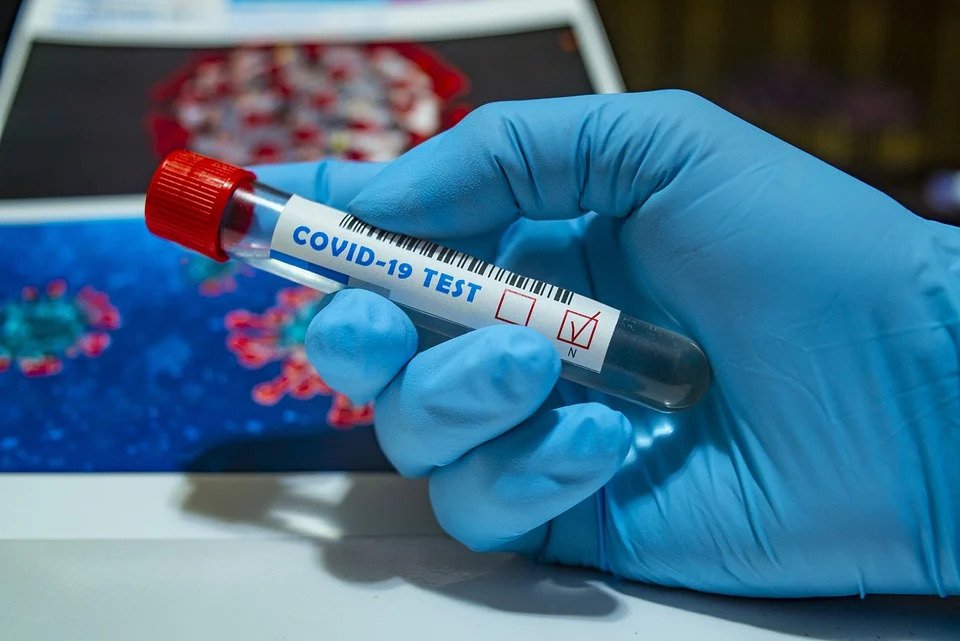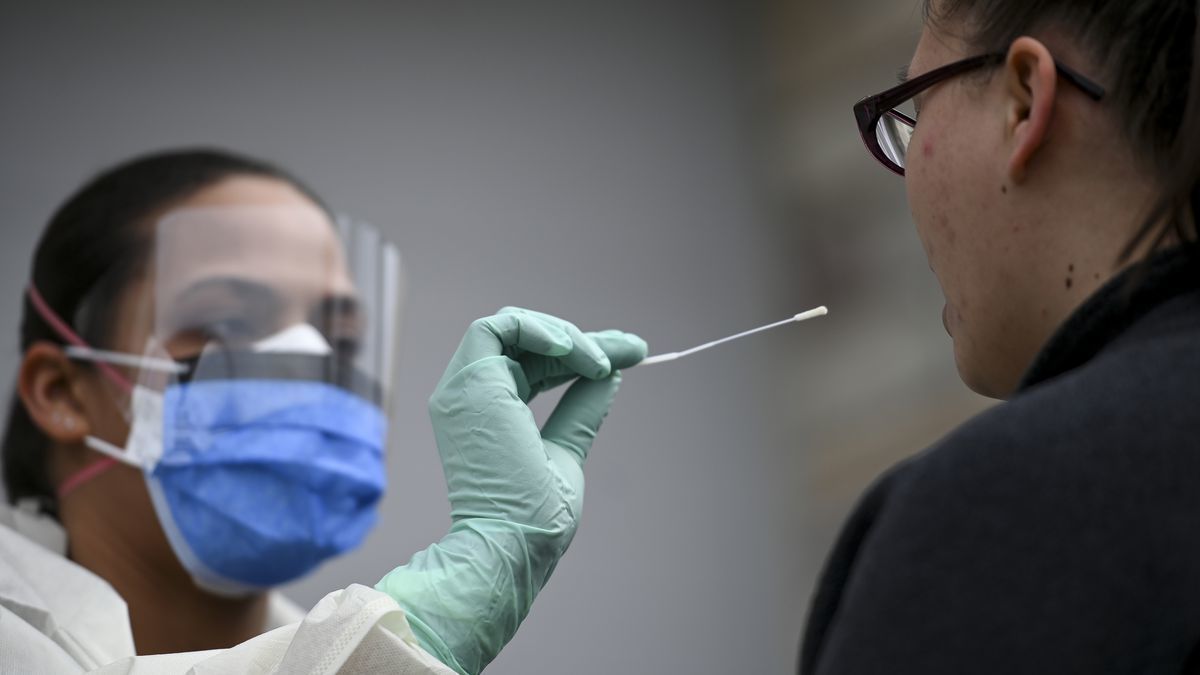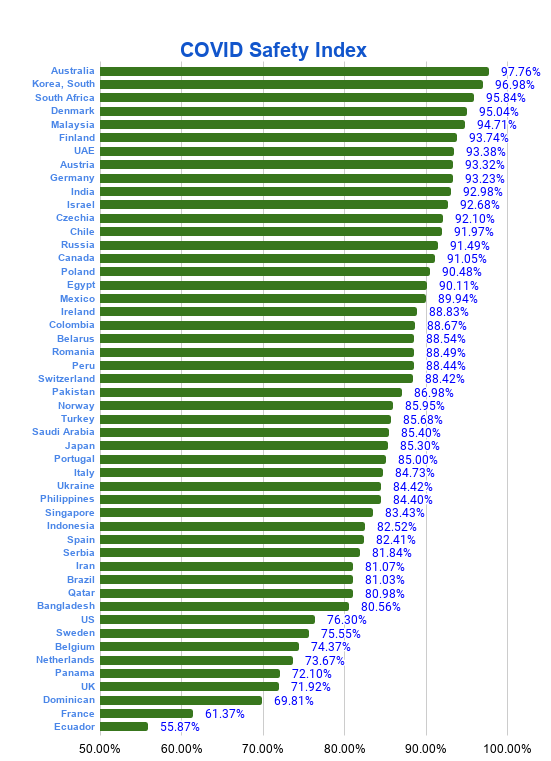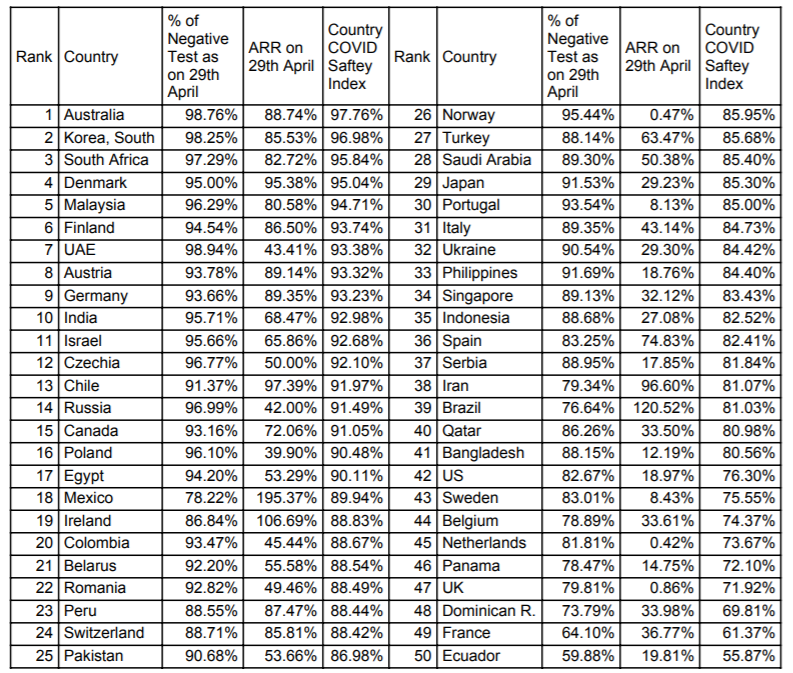“Comparing countries based on the number of COVID cases, or the testing capability, is unfair”
The COVID safety Index – calculated considering the recovery rate of patients and the percentage of tests turning negative – gives the most accurate picture. India ranks 10th in this index


The internet and TV news, these days, are flooded with coronavirus-related news – the rising number of COVID cases, recovered patients, number of tests being done, the death rate. Countries across the globe are being compared on these parameters without giving much weightage to the population density, economic capability to do extensive testing, geographical spread, and the social structure followed in particular countries.
When we compare countries based on the absolute number of COVID cases, we do injustice to the highly-populated countries. Similarly, when we compare countries just based on tests per million, we are not being kind to countries that are low on economic resources, especially testing capability, and are densely highly-populated, spread over large geographical areas.
Countries like India can never test at the same rate as South Korea. The norm has been that the usual recovery rate is being calculated as the ratio of a total number of recovered patients to total confirmed cases as on that day. However, it is almost impossible for any patient to recover on the same day he/she has been tested positive. Therefore, the usual calculation of the recovery rate doesn’t seem right if we want to get the real picture.

In light of the above, we have looked for parameters related to COVID cases which can be used irrespective of the population, testing capability and geographical area and have rated countries across the globe. We have found two such parameters that are readily available and are not too complex to understand.
We have taken into consideration countries having 5,000 or more COVID cases only so that we could limit the error due to the shortage of data. The first parameter — the “percentage of COVID test turning negative — can give us an idea as to the population of a particular country that is safe from the virus irrespective of the testing rate. In doing this, we assume that even if every person (if a country has enough resources) is tested, at least this much percentage of people will turn negative.
The second parameter is the Adjusted Recovery Rate (ARR), which we calculate as the ratio of total recovered people on a day to total confirmed cases in that country 14 days back. Usually, COVID cases are confirmed with 1-14 days of delays from actual infection, and it takes about 14-28 days for a person to recover from the COVID from the actual infection date. Therefore, we decided to consider 14 days. We caution that the ARR for a few countries could be more than 100% as the recorded data talks about the days of confirmed cases, not the actual days of infection. So, patients can recover earlier than 14 days from the confirmed date.

The ARR beautifully takes care of the death rate without talking about death. The HIGH ARR also indicates better health care facilities and preparedness to tackle COVID patients in a particular country.
Since the measure of transmission of COVID in a country is essential, we assign 90% weightage to “percentage of COVID tests turning negative” and 10% weightage to “Adjusted Recovery Rate” while calculating COVID SAFETY INDEX for countries. Kindly note that this weightage of 10% and 90% is also supported by the fact that about 10% of tests conducted in all countries (having more than 5,000 cases) have been found positive. The list of countries (having more than 5,000 cases) ranked by the COVID Safety Index based on data available as on April 29, 2020 can be seen below.

One may look at the below table consisting of both the parameters which have been used by us to calculate the COVID Safety Index. The ARR on April 29 is calculated as a ratio of total recovered cases on April 29 to total confirmed cases on April 15.

Our analysis of the COVID Safety Index beautifully rates Sweden lower than the US. Sweden, which was insisting on herd immunity and didn’t opt for a lockdown, now has a higher death rate per million than the US. The UK, which first resisted the lockdown in the name of herd immunity, and later had to opt for a lockdown, is well-attributed in this index.
South Korea, which was doing fine by testing extensively and isolating those who had tested positive, appears in the top half. By looking at the index of all the countries, we can say that it has been a fair comparison, which indirectly normalises the size and resources of a country.
Note: We have not considered China due to the unavailability of the testing data. Finland, having 4,906 cases as on April 29, has been included.
Source: https://www.worldometers.info/coronavirus/ and https://github.com/CSSEGISandData/COVID-19 .
Sachin Pandey is a PhD scholar at IISER, Kolkata
(Views
are personal)

